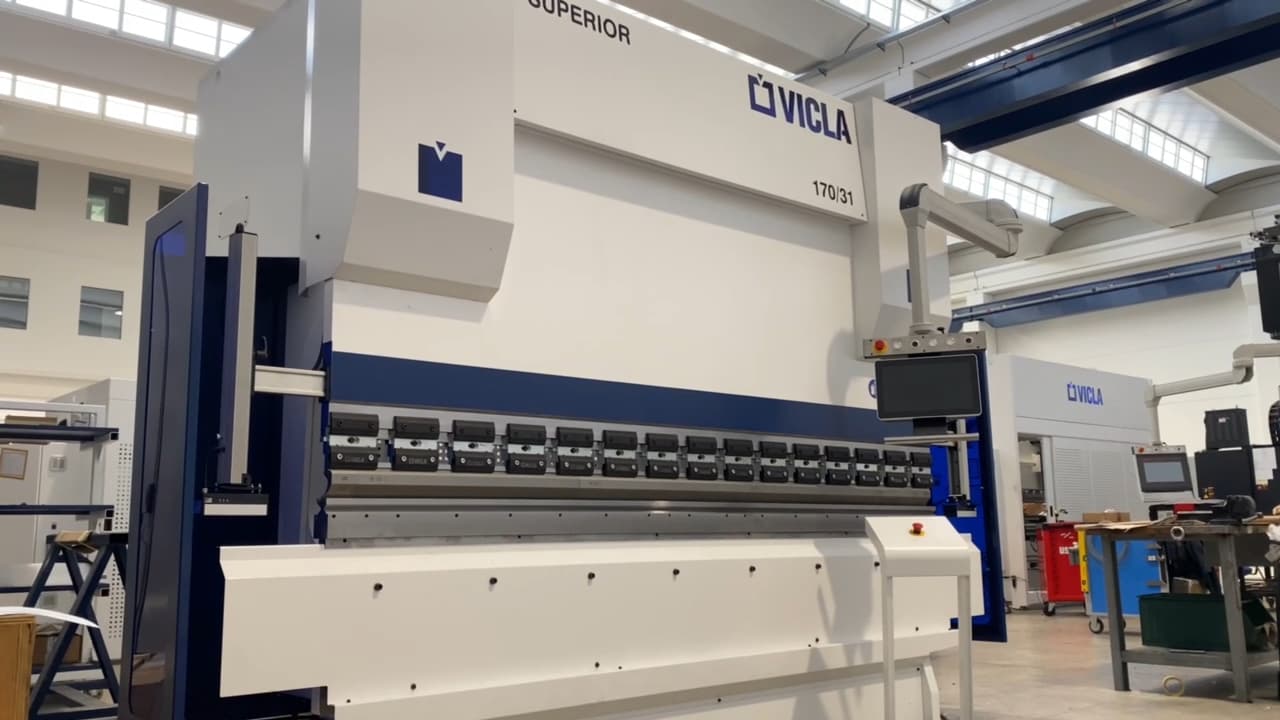Stainless steel's unique properties, such as its corrosion resistance, which we explain in detail in this guide to materials in sheet metal working, make it a popular choice. Stainless steel is used in industries ranging from food processing to construction and medical equipment. However, working with stainless steel in the sheet metal bending process presents a number of unique challenges.
To understand these challenges and how companies are overcoming them, we interviewed two specialists in stainless steel fabrication.
The Challenges of Bending Stainless Steel
Stainless steel parts are prized for their high resistance to corrosion, hygiene, and visually appealing finishes. However, these same qualities can create problems during processing, particularly bending.
"Stainless steel sheets aren't your typical flat sheet," says Davide Chinellato, Production Manager at Inox Piave di San Fior. "They often undergo various processes that can lead to deformation and thickness variations. The key is achieving consistent, uniform bends along the entire length of the piece."
Beyond bend quality, processing speed is crucial. "Today's press brakes need to be extremely fast while maintaining safety compliance," Chinellato adds. "This was a challenge in the past, as safety features often slowed production. VICLA machines, however, deliver complete safety without sacrificing performance."
Stainless steel's properties necessitate meticulous handling to avoid visible defects in the finished product. Marco Nervi, owner of C.L.A. LAVORAZIONE INOX, a company specializing in raw stainless steel machining, emphasizes this point:
"For instance, bending requires a perfectly straight and continuous bend throughout the entire piece. If the bending machine's force isn't consistent, you might end up with a slightly open or closed bend."
Choosing the Right Bending Machine
Selecting the right press brake is critical for achieving flawless parts on the first try. Companies managing numerous orders with departments working in sync require machinery that guarantees precision, repeatability, and reliability.
Inox Piave, for example, opted for a unique press brake configuration to handle their one-of-a-kind parts. "The machine, developed over a year, features a special backguage" explains Chinellato. "Essentially, it has a single crossbeam for general movement of the stops, plus four independent stops for customized adjustments."
The Advantages of Hybrid Bending Machines
Both companies chose a hybrid press brake due to its numerous benefits. Firstly, it offers consistent repeatability thanks to a compact system with reduced piping and a direct drive connection between the pump and motor.
Secondly, there's speed. Hybrid press brakes leverage cutting-edge technology to deliver high thrust. The system combines an electric axis with a hydraulic clutch and a brushless electric motor, providing both high force and fast travel speeds.
Finally, hybrid machines offer greater versatility compared to all-electric models.
As Chinellato explains, "For the bending we do, an all-electric option wouldn't deliver the necessary performance. That's another reason we chose VICLA's hybrid technology."

Selecting the Right Tools
Cost is another crucial factor when working with stainless steel, as Nervi explains:
"Material costs have risen in recent years, especially in the first half of 2022 when finding materials was difficult. This, combined with the material's delicate nature, makes waste reduction essential. Even minor marks can render a stainless steel component unusable, particularly in applications like furniture where aesthetics are paramount."
Materials like AISI 304 stainless steel, iron, galvanized steel, copper, brass, aluminum (including diamond plate and painted varieties) all require meticulous handling to avoid visible defects. Choosing the right bending machine is crucial, but so is using tools that won't damage the material, such as protective films placed between the sheet metal and the die.
We have written a guide that illustrates the main types of dies and punches most used in bending.
The K-Factor in Sheet Metal Bending
The K-factor is a critical aspect in sheet metal processing, including stainless steel. It's essential for achieving accurate bends. The K-factor represents the ratio of the material thickness to the neutral radius, directly impacting the final bend result.
For a deeper dive into the K-factor and its influence on stainless steel processing, please refer to our article on the sheet metal K-factor.
